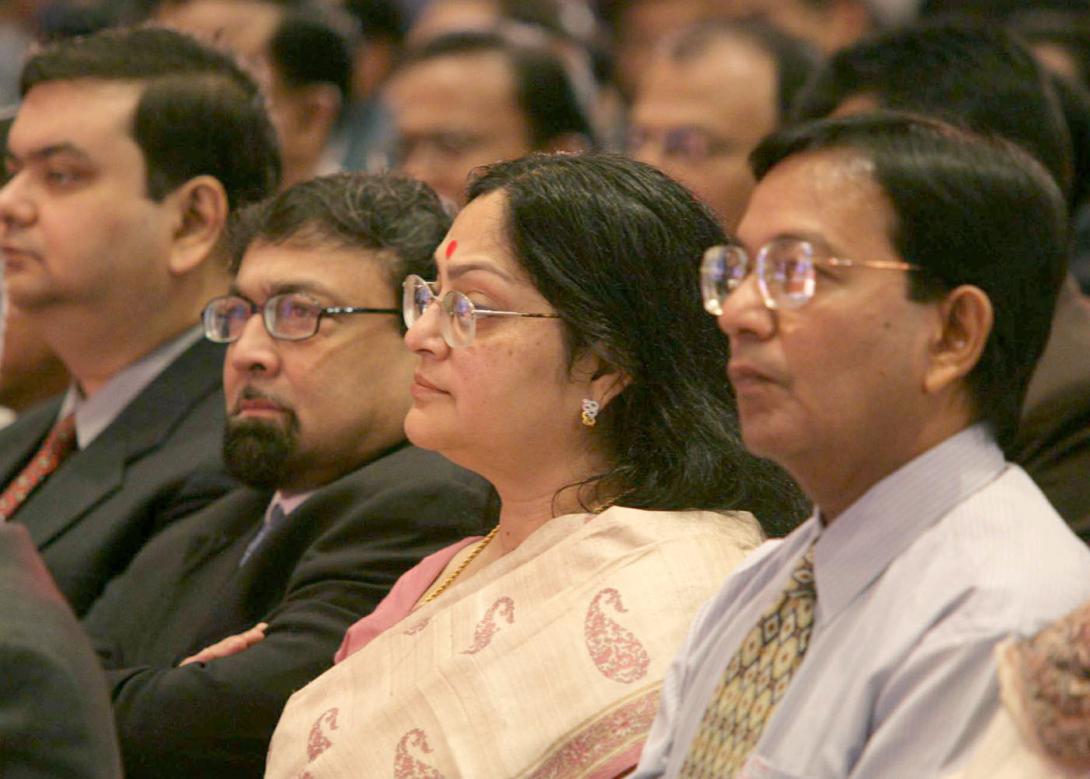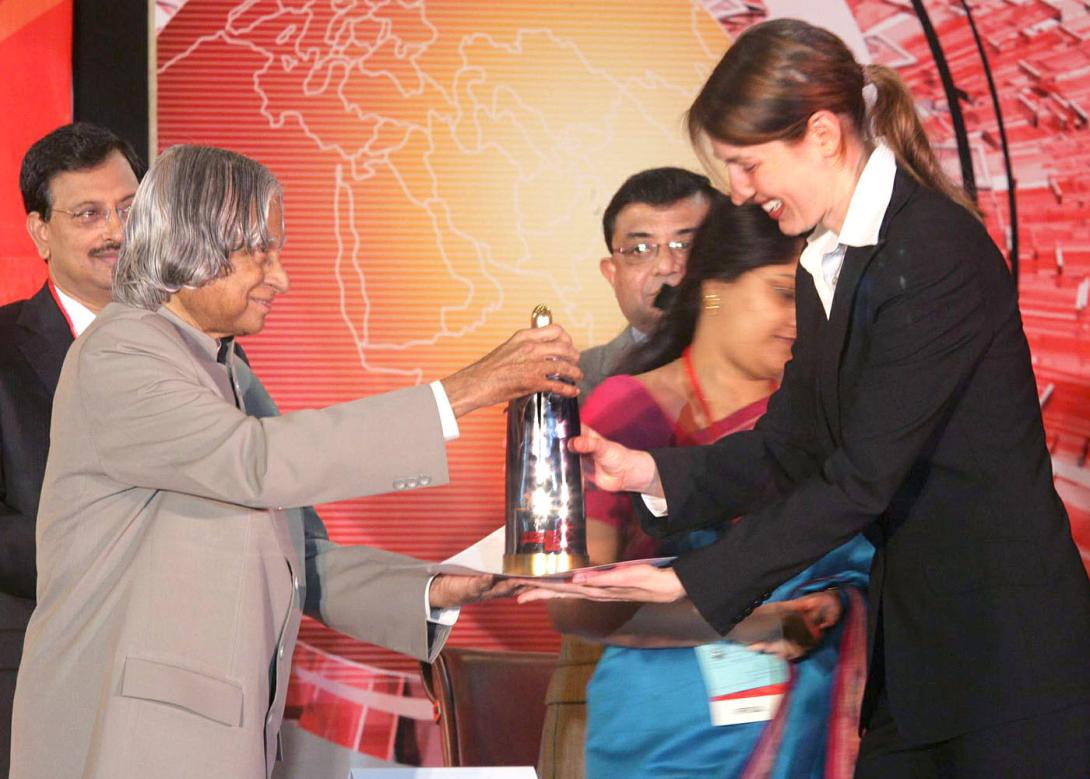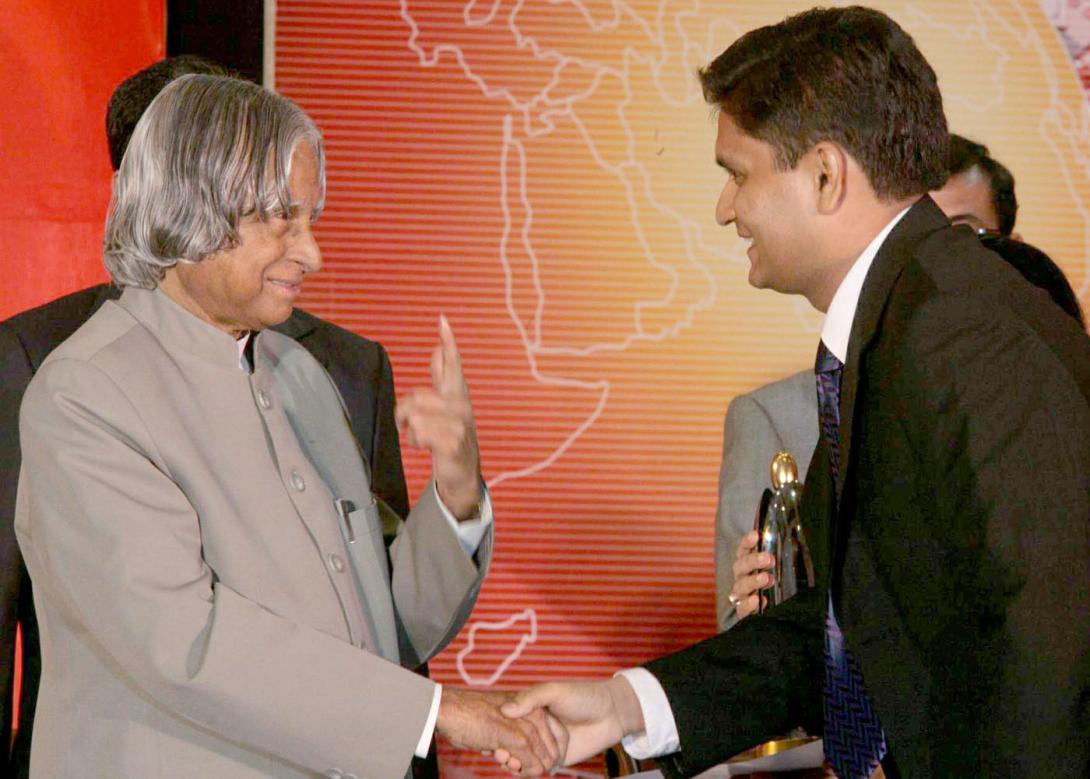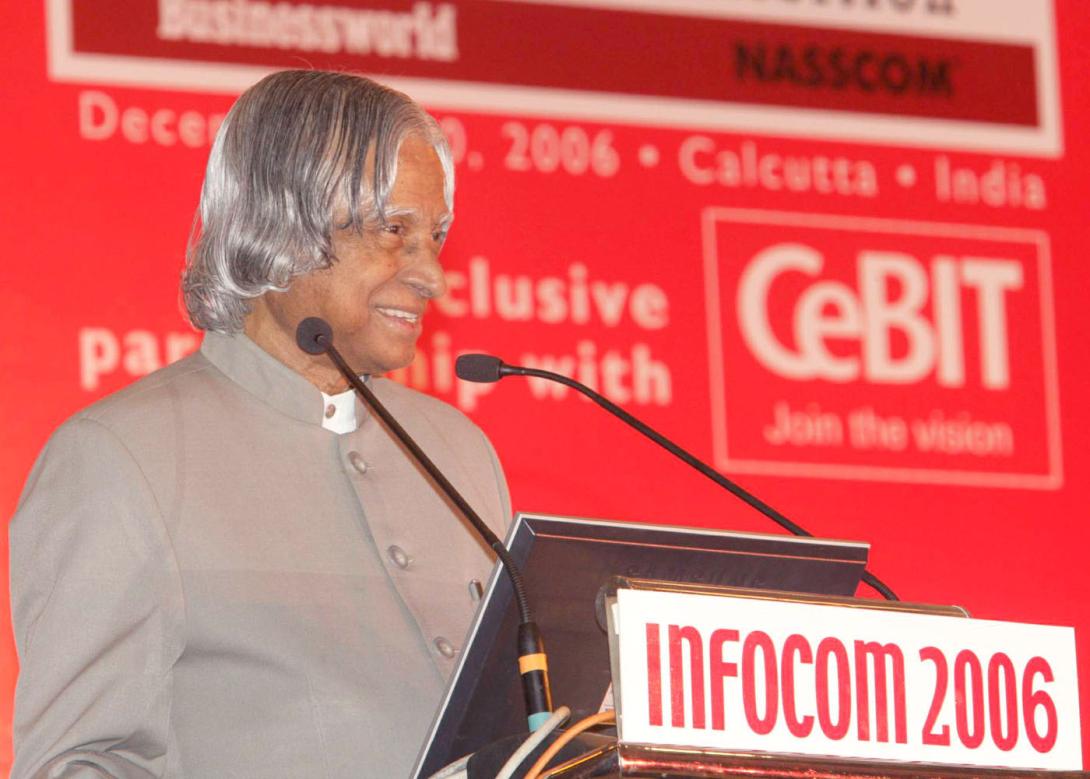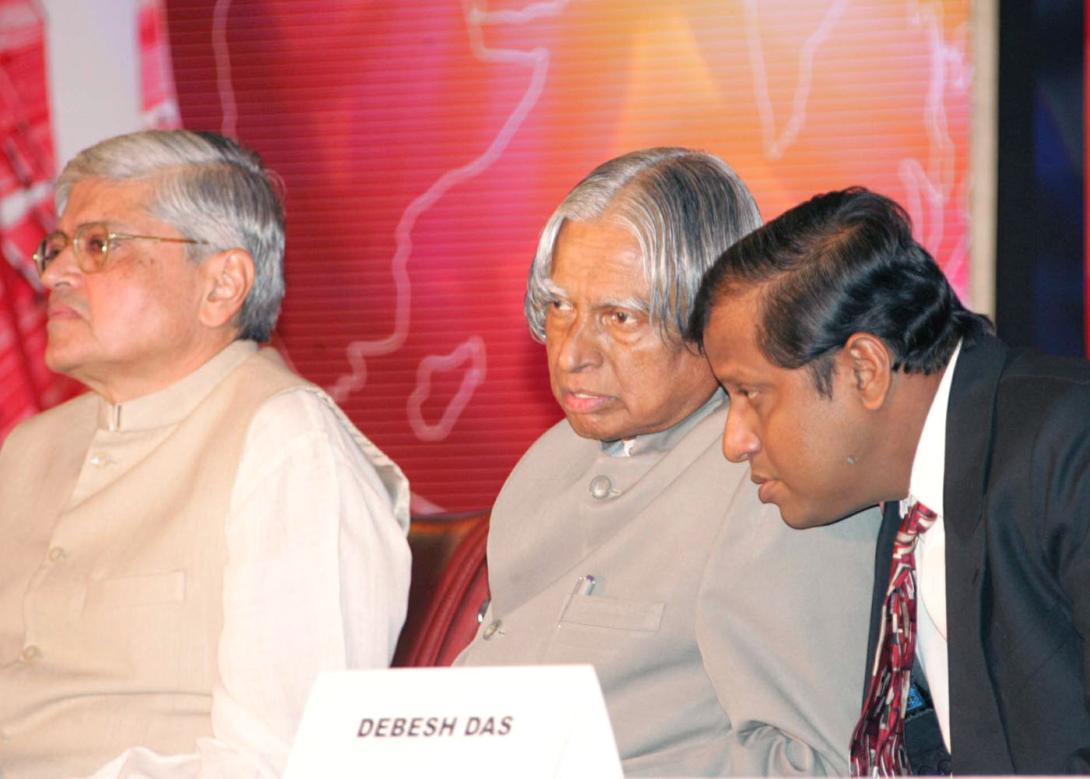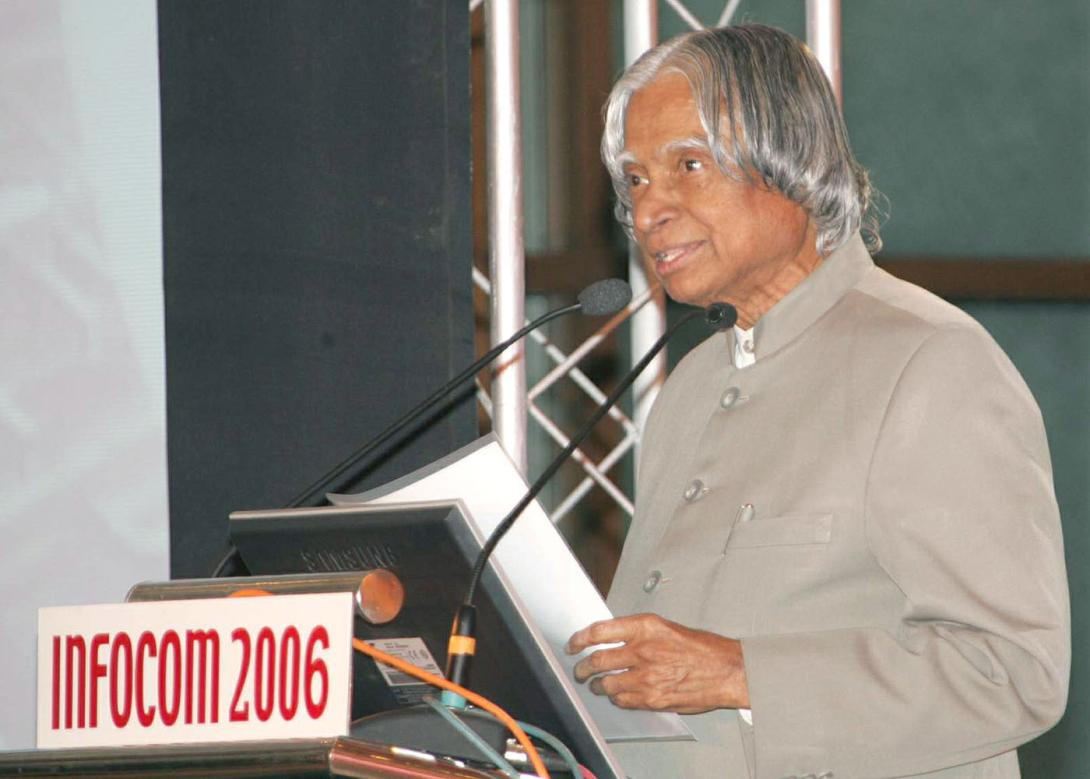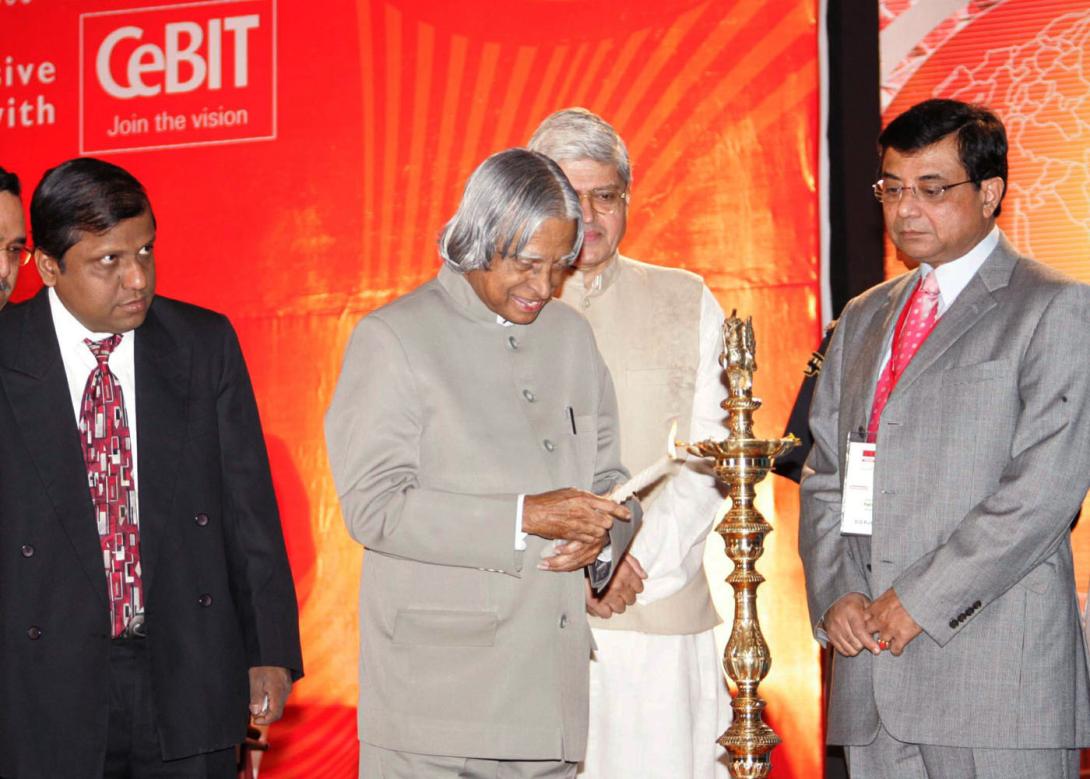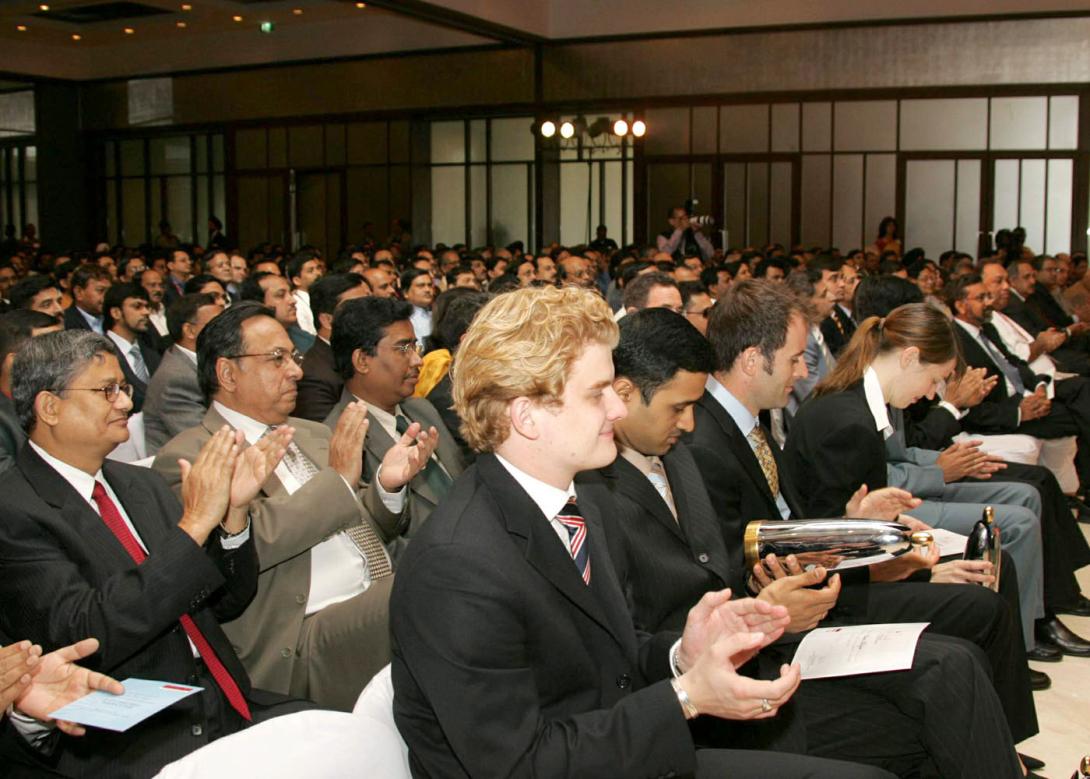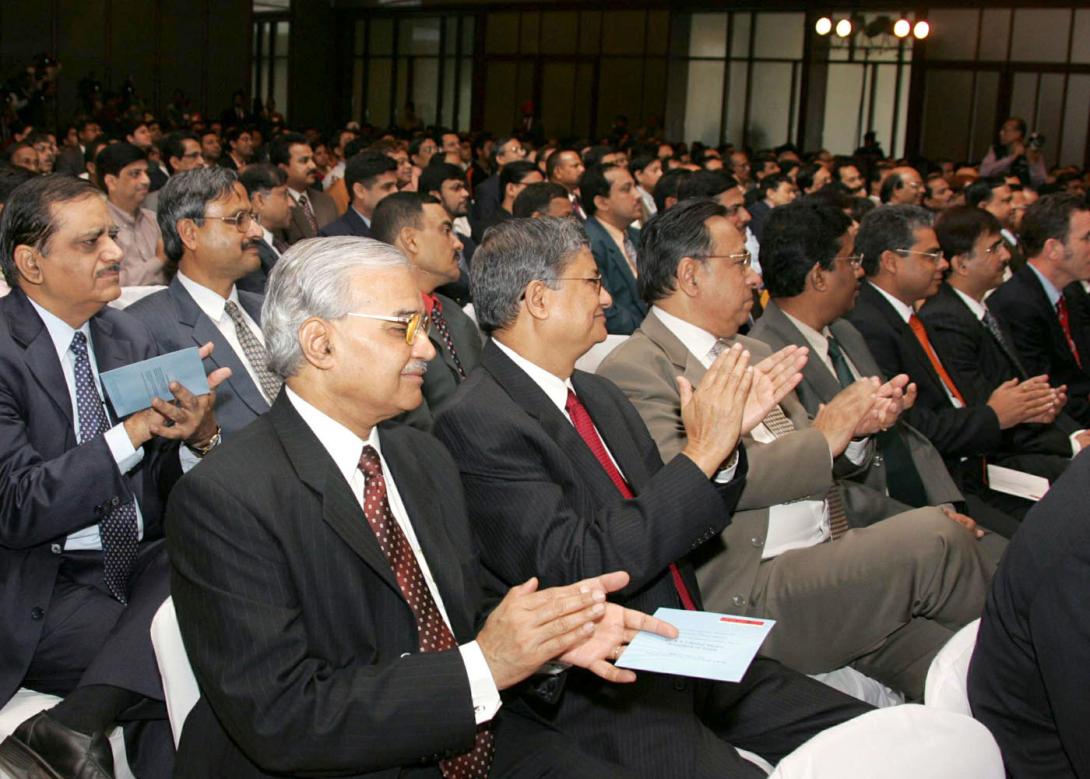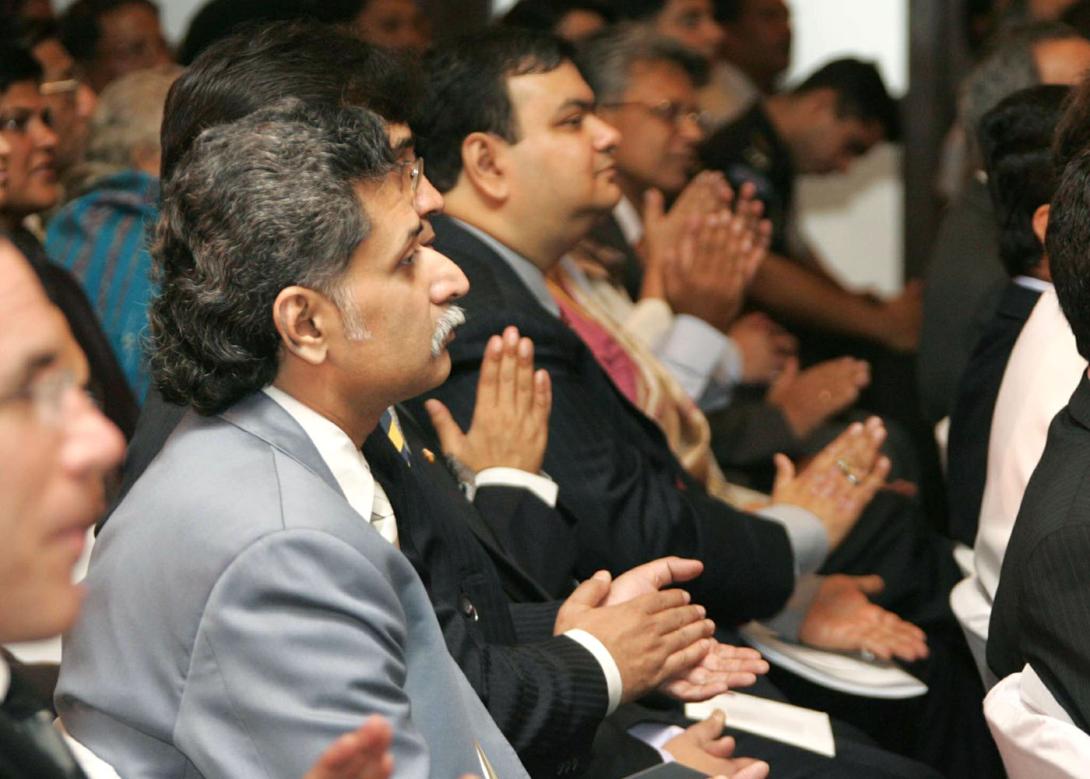Address at the Inauguration of Infocom 2006, Kolkata
Kolkatta : 06-12-2006
Innovate to Integrate
"Technology empowers economic development"
I am indeed delighted to participate in the Inauguration of Infocom 2006, at Kolkatta organized by the Business World & NASSCOM. I greet the organizers, business leaders, ICT specialists, policy makers, academicians, media, industry leaders from India and abroad. The main theme of the conference ?Innovate to Differentiate? is indeed a mission to celebrate, which will certainly kindle the mind of the youth in the ICT sector to perform with a focused mission to innovate knowledge products. The different forums such as Innovators forum, Global Forum, Future technology Forum, BPO-KPO forum organized by this conference will certainly provide an in-depth understanding of today?s challenges before you in the ICT knowledge domain. Definitely, Infocom 2006 is an opportunity for the entire ICT community in India and abroad to converge, discuss, and brainstorm resulting to new and innovative ideas to provide ICT solution to the challenges in various sectors of the economy. Indeed most countries and corporate should innovate to differentiate between the better and the best.
They should innovate to become the best in whatever pursuit they have chosen. The differentiation may at times lead to an economic divide and possibly a digital divide. The benefits of innovate to differentiate must also be used effectively to integrate and to bridge any divide that may come due to the gaps in digital information, economic criterion and geography. I would think you should innovate to differentiate and also innovate to integrate so that we will have a prosperous, happy and peaceful world which has all the technologies that the man had ever invented at its command. In 19th century and 20th century, Bengal always gave innovation to the nation in the form of freedom movement, industrial movement, spiritual movement; even science academy was initiated over there. It is not by accident that all the Nobel Laureates from India had strong connections with Bengal. One may wonder that the Bengal on whose soil the Britishers set their foot first and tried to westernize our nation and our educational system, is giving a message to the world that we are the best and we would not tolerate outside influence into our culture and education. I was thinking what thoughts I can share with you while inaugurating this conference. I would like to talk to you on "Innovate to Integrate".
The Bengal Tigers
When India started to participate in the ICT revolution, Bengal and many of the eastern states were not even in the radar screen. However, the Eastern neighbours of India, like Singapore, Malaysia and Korea had made phenomenal progress to make themselves synonymous with the term Asian Tigers. Now, West Bengal has woken up to the world of ICT. It should become a gateway to the East in ICT and bring in a niche capability to the Indian market. Most of the projections for exports of ICT projects were done without considering the possibility of Bengal Tigers, entering the field of ICT with a roar. When I projected in 2005 that the Indian ICT market should reach $200 billion by 2010, NASSCOM was predicting a figure of around $100 billion. Now that West Bengal has woken up, we are all eagerly waiting to make the dream of $200 Billion by 2010 a reality by innovating to differentiate.
Creativity
In a knowledge society, we have to make innovations continuously. Innovations come through creativity. Creativity comes from beautiful minds. It can be anywhere and any part of the world. It may start from a fisherman hamlet or a farmer?s household or a dairy farm or cattle breeding center or it emanates from classrooms or labs or industries or R&D centers. Creativity has got multi dimensions like inventions, discoveries and innovations. Creative mind has the ability to imagine or invent something new by combining, changing or reapplying existing ideas. Creative person has an attitude to accept change and newness, a willingness to play with ideas and possibilities, a flexibility of outlook, the habit of enjoying the good, while looking for ways to improve it. Creativity is a process through which, we can continuously improve ideas and find unique solutions by making gradual alterations and refinements to our works. The important aspect of creativity is: seeing the same thing as everybody else, but thinking of something different. Now let me talk about the Law of Development where creativity and innovation is the capital.
Law of development
In the last few years, I have been studying the development patterns and the dynamics of connectivity between nations, especially in trade and business. As you all know the world has few developed countries and many developing countries. What is the dynamics between them and what connects them? A developed country has to market its products in a competitive way to different countries to remain a developed country. For the developing countries to get transformed into developed countries; they too have to market their products to other countries in a competitive way. Competitiveness is the common driving factors between the two types of nations. Competitiveness has three dimensions: quality of the product, cost effectiveness and product is in the market just-in-time. Indeed this dynamics of competitiveness in marketing of products by developing and developed countries is the law of development. There is a relationship between the core competence and the competitiveness of the country. Such a law applies to individual companies as well. A nation can be competitive only if its products and systems are produced competitively in an environment which is inherently competitive for reasons such as for example that infrastructure can be easily developed and skilled human resource is locally available.
Technology Interfaces
Technology is the non-linear tool available to humanity, which can affect fundamental changes in the ground rules of economic competitiveness. Science is linked to technology through applications. Technology is linked to economy and environment through manufacture of knowledge products. Economy and environment are linked to technology, which promotes prosperity to the society. In the early mid 1990s the growth in the ICT was non-linear. Subsequently, I find that there is stagnation and we are expecting the industry to grow at a sequential growth of around 25% to 27% and deliver nearly only US $ 60 billion as export business by 2010. This situation needs change and we have to aspire to increase our software export to $ 200 billion as stated above. It will need adoption of multiple innovative strategies by the NASSCOM and the industry partners as I have discussed above both from the view of supply side management and demand side management.
In addition to the support for the export market there are major activities, which have to be completed in the domestic area. We have a national e-governance plan with twenty five-mission mode projects. Also, statewide area network has to be established by 2007. Computerization of over nearly 13, 500 district and subordinate courts are required to be completed. The software industry has to provide solutions for all these tasks within the next two to three years. Other major areas of activities for the software personnel are establishment of village knowledge centers, education and healthcare facility for remote rural areas.
Bandwidth is the bridge for prosperity
The bandwidth is the demolisher of imbalances and a great leveler in the knowledge society. Making the bandwidth available is like the Government laying the roads. Movement of materials through these roads creates wealth in the industrial economy and the government recovers more than the investment on the roads by way taxes and enhanced prosperity of its people. In the modern digital economy driven by knowledge products, bits and bytes traverse the network and create wealth and this will recover the cost of investments in the bandwidth. Thus a singular action of making the bandwidth available to all Indians will bridge the perceived divide. The free bandwidth will make an economic sense if we cost the services offered using the bandwidth. We have the fiber infrastructure ready up to block level, last mile wireless technologies are being implemented and the VSAT technologies for the unreachable are in place in the form of EDUSAT and other Satellite services. Hence, we are well on our path to bridge the gap.
The more educated you are, the less bandwidth you would use for communication. For example, many of you may communicate very easily by an asynchronous text based email system, which requires the least bandwidth. Lesser endowed persons may require slightly higher bandwidth like for example synchronous voice communication. A person who has not been educated at all may require the high bandwidth video conferencing system. In case, we are trying to be inclusive, making the bandwidth available on demand in an unhindered way to the rural areas would be the first action required. I would like the experts gathered here and the NASSCOM to take up the challenge of providing free bandwidth for any one, anywhere, anytime. I am convinced that soon, we will be living in a world of unlimited bandwidth and human like interfaces to the world of information systems that will kindle the minds of the youth towards developing knowledge products.
Knowledge products for non-linear growth
In January 2005, the Indian IT industry reached a mile stone of having more than one million software professionals employed by the industry. This number continues to grow. I must congratulate the industry for this growth in spite of worldwide reluctance on outsourcing. This shows the unquestionable quality of the Indian software professionals and the fact that India is the best and the ultimate destination for all ICT related activities. It is also heartening to note that not only the number of personnel employed by the ICT industry has gone up, but also the revenue per capita has also increased. However for the country that wants to become the leader in the knowledge era, it is necessary to have revenue per capita almost increased by an order of magnitude. This will also assure you that the Indian ICT moves up the value chain and takes on jobs that are costed more as a total project cost as compared to the projects that are costed on dollar per hour basis.
A typical international software company with 50,000 employees earns over 20 billion dollars through its worldwide operations. I would like to mention here that in this area, one single MNC contributes to over 40 billion-dollar businesses today. That means the per capita yield of Indian knowledge worker is one fourteenth of a similar worker in the developed nation. I suggest that the Governments, Industry and the academia to work together to develop and market intellectual property products which alone can increase the per capita revenue non-linearly for the Indian Software Industries. Hence our software industry has to move up the value chain and come up with innovative products that will have an order of magnitude commercial impact in the international market. I am confident that the Indian IT Industry is capable of undertaking such mega missions.
The knowledge product development is a challenging area such as embedded software, networking software, real time software and integrated software in the bio, info and nano technologies. But if we are looking for non-linear growth in future years it is an essential step that the ICT community should venture today with confidence and become a knowledge product community. If the front line IT companies is hesitant to venture in this area, NASSCOM should create consortiums of budding IT companies who can undertake this challenging mission.
Mission of knowledge Products: We need to attain self-reliance in the infrastructural software sector with the knowledge products, where the domain applications can be developed and deployed for the services sector. It is essential to channelise our resources from the industry, academic institutions and research organizations and setting up the incubation centers in collaboration with each other in different parts of the country. These incubation centers will continuously feed the technologies to the industries. The student community is a big resource, the IT industries in their own interest; have to equip the educational institutions to harness the power of the student community. For effective competitiveness with the research results, innovation as said, an effective triangle of industries, researchers from academia, R&D and the student community, it is possible to develop innovative products. The knowledge products in the following domains such as:
1. General Purpose Operating Systems, Real Time Operating Systems through open source initiative.
2. Embedded Operating Systems to run the real time and mission critical applications for the defence, space and aerospace applications.
3. VLSI design, smart card manufacturing sector with a multifactor authentication mechanism with embedded encryption technology for the National ID Card Initiative.
4. Design and development of a robust Application Server framework for middle tier business applications.
5. Platform independent and efficient Relational and Object oriented Database management systems.
6. Digital Security Algorithms based on Indian Traditional knowledge through our languages like Sanskrit, Hindi, Tamil and others, which have unique encryption capabilities.
7. Language independent software is the most immediate need for the country since we are a multi-lingual nation.
These tasks are important for the ICT community for wealth generation. Further, we should make the infrastructural software products compatible to the future technologies namely the nano electronic devices and computers. In addition to the linear growth in IT services, ITES and BPO sector, which is labour intensive, India should aspire for producing knowledge products as discussed so far. Software products accounts for 260 billion dollars of Global business. At least we should work for a market share of 10% in the beginning. Hence the total market share for India should be 200 plus the additional 36 billion dollars.
Nano electronics and Devices
India had missed the micro electronic bus. Presently nano technology is knocking at our doors. If we take proper investment decisions we can definitely aspire to become leaders in nano technology products especially in the nano electronics area, which is having a market potential of 300 billion dollars.
India should now invest to the tune of 300 million dollars towards the nano science and technology research in partnership with the like minded MNCs for the research, development and volume production of nano electronic devices including nano computers with time bound mission mode programmes. This requires collective efforts between the industry, academic institutions, R&D laboratories and the Government for having integrated development of infrastructure, human resources, product design, manufacturing and marketing. The academic institutions and the ICT industry have to jointly mount a joint programme for meeting such a challenging mission. Since, the nation and international ICT organizations are assembled here, I would like to share with you one of the important mission where you can play an important role.
Suggestions
While inaugurating the NASSCOM 2006 India Leadership Forum on 17 Feb 2006, I have given certain missions, which I would like to share with you here so that the missions will be accelerated with the active participation of the ICT industries.
a. Creating awareness among the addressable market clients about the win-win situation arising out of out-sourcing IT, ITES and BPO to Indian companies, thereby, converting the addressable market into an actual market.
b. Promoting creation of BPO industry in the Tier-2 cities with a population of around one million to start with this can be extended further to city town with five lakh population.
c. Establish joint ventures between countries such as Philippines and Korea and other East Asian countries where the infrastructure is already there and the overall cost of operations is also low. This will enable servicing of large number of customers.
d. Participating in the development of e-governance, tele-education, tele-medicine and e-business across the country for making the benefits of ICT reach the common man in all his sphere of activity. Create a level playing field for the Small and Medium ICT industry to participate in this process. Encourage Consortium approach to provide total solution.
e. Participate in the provision of connectivity to the billion people through village knowledge centers, mobile telephones and provision of domain services on the lines of Kisan Call Centre for entrepreneurial skill development and employment generation, Travel and Tourism, Banking and Insurance, Meteorological forecasting, Disaster Warning systems, Education and Human Resource Development and Health care.
f. Become a partner to the World Knowledge Platform and E-business Network and there by attain the targeted growth of $200 Billion by 2010.
Conclusion
Let us think together, what are the types of enriched partnerships possible between the ICT, Academia and the industries across the world. Three distinct areas can be identified. They are, (i) Transforming India into knowledge society with innovation as the thrust area influencing the information society, industrial society and agricultural society. (ii) As you are aware India has 540 million youth below 25 years, which is an important asset for the planet Earth. This dynamic resource will have two components. One, at the secondary education level supplemented with high quality vocational skills and the other at the university level. Knowledge workers will come out of this Global Human Resource Cadre. Definitely, ICT companies in association with the Academic and R&D institutions can participate in the evolution of trained human cadre.
West Bengal has been known for its culture, literature, art, science, education and heritage. When it fosters a very growing state of the art technology like ICT, it will have a unique fusion leading to enlightened citizens living in absolute harmony with their environment and contributing to the national Development.
Wish you all the best.

